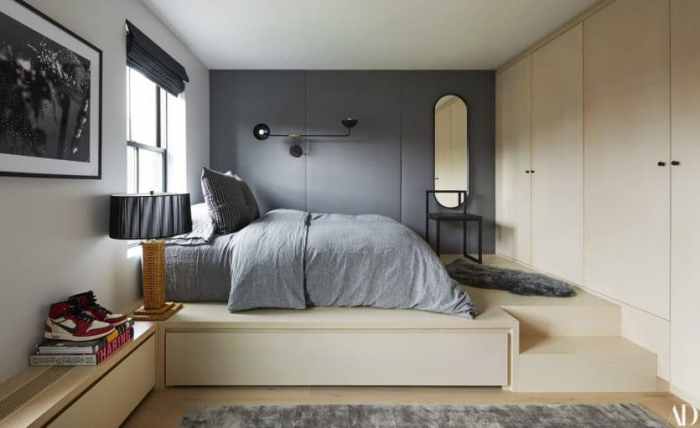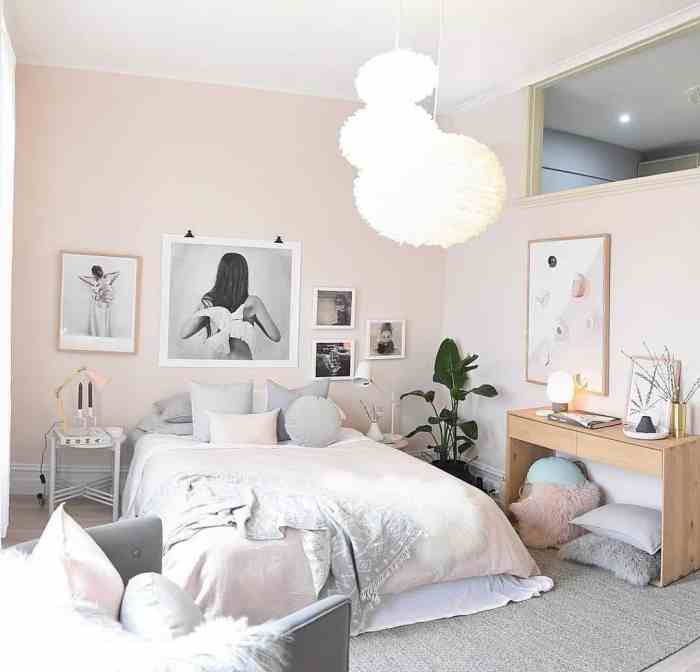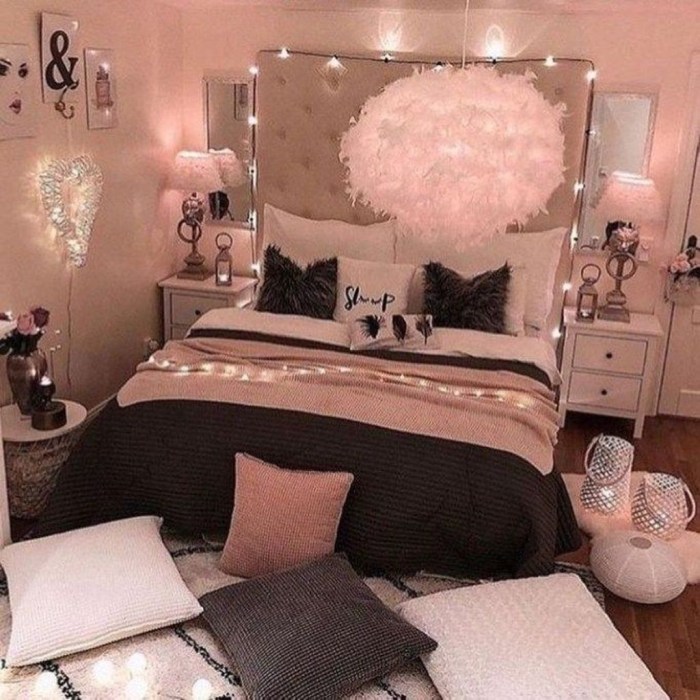The teenage years are a time of significant growth and development, both physically and emotionally. The environment in which teens spend their time can have a major impact on their well-being and overall development. This is why it’s important to create a bedroom space that encourages personal growth and provides a sanctuary for self-expression.
In this guide, we will explore the key design elements that can help create a teen bedroom that fosters personal growth. We will discuss the importance of color and lighting, furniture and storage, decor and accessories, layout and space planning, and the integration of technology.
By incorporating these elements into your teen’s bedroom design, you can create a space that supports their journey towards self-discovery and empowerment.
Design Elements for Personal Growth
A bedroom designed to encourage personal growth is a space that fosters creativity, self-expression, and a sense of belonging. It’s a place where teens can feel comfortable exploring their interests, developing their talents, and growing into the best versions of themselves.
There are a number of design elements that can be incorporated into a teen bedroom to promote personal growth. These include:
Personalized Decor
Personalized decor can help teens feel more connected to their space and make it a more welcoming environment. This can include things like photos of friends and family, artwork they’ve created, or mementos from special experiences.
Flexible Furniture
Flexible furniture can be rearranged to accommodate different activities, such as studying, relaxing, or socializing. This can help teens create a space that meets their changing needs and allows them to express their creativity.
Natural Light
Natural light has been shown to have a number of benefits for mental and physical health. It can help improve mood, boost energy levels, and promote better sleep. Incorporating natural light into a teen bedroom can help create a more positive and healthy environment.
Plants
Plants can add a touch of nature to a teen bedroom and have been shown to have a number of benefits for mental and physical health. They can help improve air quality, reduce stress levels, and boost creativity.
Color and Lighting
Color and lighting play a significant role in shaping the atmosphere of a room, influencing our mood, energy levels, and overall well-being. When designing a teen bedroom that encourages personal growth, it’s essential to consider the psychological effects of different colors and lighting schemes.
Color
Colors evoke various emotions and can have a profound impact on our psyche. For a teen bedroom, choosing colors that promote calmness, creativity, and self-expression is crucial. Consider shades of blue, green, and purple, known for their calming and soothing properties.
Yellow and orange hues can boost energy and stimulate creativity, while pink and lavender foster a sense of peace and tranquility.
Lighting
Natural light is essential for well-being, so ensure the bedroom has ample windows to allow plenty of sunlight during the day. Incorporate artificial lighting fixtures that provide a warm, inviting ambiance in the evening. Dimmable lights offer flexibility, allowing for adjustments based on the desired mood and activity.
Consider using task lighting for studying or reading, and ambient lighting for relaxation and sleep.
Furniture and Storage
Thoughtfully selected furniture and storage solutions can significantly contribute to fostering personal growth in a teen’s bedroom. By providing comfortable and functional spaces for studying, relaxation, and self-expression, the bedroom environment can become a supportive and inspiring haven.
When choosing furniture, consider pieces that encourage good posture and support healthy habits. Adjustable desks allow teens to alternate between sitting and standing, promoting movement and reducing the risk of back pain. Ergonomic chairs provide lumbar support, reducing strain on the spine during extended study sessions.
Storage Solutions
Adequate storage is crucial for maintaining a clutter-free and organized space. Built-in shelves and drawers can maximize vertical space, while under-bed storage solutions provide additional room for seasonal items or bulky belongings.
- Shelving and Bookcases: Displaying books, plants, and personal items on shelves can add character to the room and encourage intellectual pursuits.
- Closet Organizers: Drawers, shelves, and hanging systems can help teens keep their clothing and accessories organized, fostering a sense of order and control.
- Storage Ottomans: Ottomans with built-in storage compartments provide additional seating while doubling as a place to store blankets, pillows, or toys.
Decor and Accessories
Incorporating personal touches through decor and accessories can foster self-expression and create a space that reflects your child’s unique personality and aspirations. By choosing meaningful items that align with their interests, hobbies, or aspirations, you can create an environment that encourages them to explore their passions and develop a sense of purpose.
Consider displaying artwork, photographs, or quotes that inspire your child or represent their values. Allow them to personalize their space with items that hold sentimental value, such as travel souvenirs, awards, or childhood keepsakes. These personal touches will create a sense of belonging and motivate them to strive for their goals.
Wall Art
- Choose artwork that reflects your child’s interests or aspirations. For example, a budding artist may appreciate framed prints of their own creations, while a future scientist may enjoy posters of scientific discoveries.
- Consider creating a gallery wall with a mix of framed photos, artwork, and inspirational quotes. This allows your child to express their personality and change the display as they grow and evolve.
- Incorporate wall decals or murals that align with your child’s hobbies or passions. For instance, a sports enthusiast may enjoy a wall mural depicting their favorite athlete or team.
Textiles and Patterns
- Choose bedding, curtains, and rugs in colors and patterns that reflect your child’s personality and style. For example, a nature lover may appreciate earthy tones and floral prints, while a tech enthusiast may prefer bold geometric patterns.
- Layer different textures and fabrics to create a cozy and inviting atmosphere. For example, a combination of soft blankets, plush pillows, and a textured rug can provide a comfortable and relaxing space.
- Incorporate textiles that have sentimental value, such as a quilt made by a grandparent or a blanket that holds childhood memories.
Accessories and Personal Touches
- Display meaningful objects that represent your child’s hobbies or aspirations. For example, a musician may display their musical instruments, while a future writer may keep their favorite books on display.
- Create a designated space for your child to display their collections, such as comic books, action figures, or sports memorabilia. This allows them to showcase their interests and fosters a sense of accomplishment.
- Incorporate plants or flowers to bring a touch of nature into the room. Studies have shown that plants can improve mood and reduce stress, creating a more positive and conducive environment for personal growth.
Layout and Space Planning
The layout and space planning of a teen bedroom can significantly impact their personal growth and well-being. A well-designed space can provide a sense of comfort, privacy, and inspiration, while a cluttered or disorganized environment can hinder their ability to focus, relax, and grow.
Here are some key considerations for layout and space planning in a teen bedroom:
Flow and Accessibility
- Ensure there is a clear and easy flow of movement throughout the room, with ample space for the teen to move around freely.
- Avoid placing furniture or obstacles in high-traffic areas or blocking access to windows or doors.
- Create designated areas for different activities, such as a study zone, a relaxation area, and a storage area.
Natural Light and Ventilation
- Maximize natural light by placing the bed and desk near windows.
- Use sheer curtains or blinds to allow light in while maintaining privacy.
- Provide adequate ventilation by opening windows regularly or installing a fan or air purifier.
Storage and Organization
- Provide ample storage space for clothes, books, and other belongings.
- Use a combination of shelves, drawers, and baskets to keep the room organized and clutter-free.
- Encourage the teen to regularly declutter and donate or discard items they no longer need.
Personalization and Expression
- Allow the teen to personalize their space with their own style and interests.
- Encourage them to display artwork, photos, or other meaningful items that inspire and motivate them.
- Provide a space where they can pursue their hobbies or passions, such as a music corner or a reading nook.
Growth and Adaptability
- Design the space to accommodate the teen’s changing needs as they grow and develop.
- Use furniture that can be easily reconfigured or adjusted, such as modular shelving or a loft bed.
- Provide space for future additions or upgrades, such as a larger desk or a gaming console.
Integration of Technology
Integrating technology into a teen’s bedroom can foster personal growth and enhance their learning and creativity. Technology can provide access to educational resources, encourage communication, and support exploration of interests.Smart devices, such as tablets or laptops, offer a wealth of educational apps and online platforms that cater to diverse learning styles.
Interactive games, simulations, and virtual field trips can make learning more engaging and effective.
Smart Lighting and Sound Systems
Smart lighting and sound systems can create an ambiance that supports relaxation, focus, or creativity. Adjustable lighting allows for customization based on the activity, while smart speakers can stream music, podcasts, or audiobooks that inspire and educate.
Interactive Wall Displays
Interactive wall displays, such as digital whiteboards or touch screens, provide a collaborative space for brainstorming, presentations, or showcasing creative projects. They encourage teamwork, communication, and the development of digital literacy.
Dedicated Technology Corner
A dedicated technology corner with a comfortable chair and ample storage for devices can foster a sense of ownership and responsibility. It provides a designated space for homework, creative projects, or simply exploring online interests.
Privacy and Safety Considerations
While integrating technology, it’s crucial to consider privacy and safety. Establish clear guidelines for device usage, encourage responsible online behavior, and install parental control software if necessary.
Last Recap
Creating a teen bedroom design that encourages personal growth is a rewarding endeavor that can have a lasting impact on your child’s life. By following the guidelines Artikeld in this guide, you can create a space that is both functional and inspiring, and that supports your teen’s growth and development into a confident and successful young adult.



